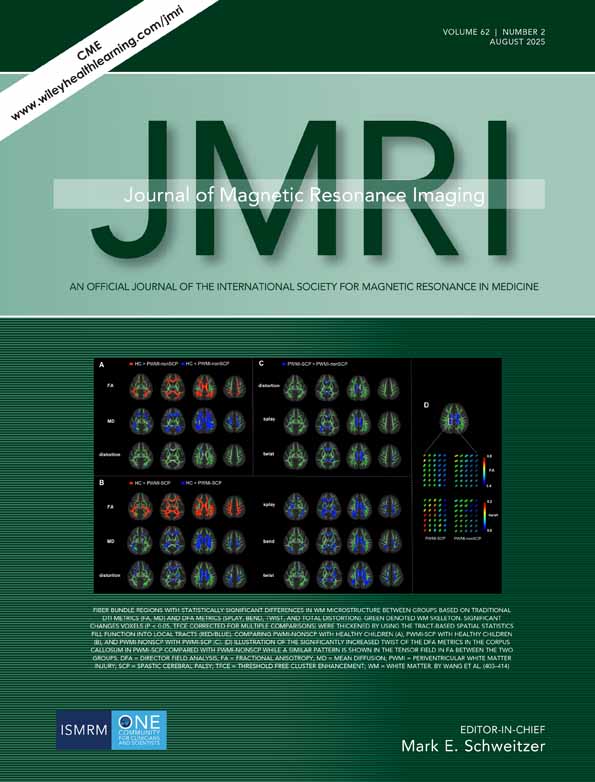MR-guided interstitial laser-induced thermotherapy of hepatic metastasis combined with arterial blood flow reduction: Technique and first clinical results in an open MR system
Abstract
The feasibility and safety of percutaneous laser-induced thermotherapy (LITT) of liver metastases in an open low-field magnetic resonance imaging (MRI) system combined with microsphere-modulated blood flow reduction were tested. Nd:YAG laser therapy with an internally cooled laser applicator was performed under local anesthesia on 20 patients with 34 liver metastases. To increase the effectivenes of LITT, degradable starch microspheres were injected into the proper hepatic artery through an MR-visible catheter initially inserted under fluoroscopy. Near real-time imaging was used for positioning the laser applicator. A T1-weighted gradient-echo breath-hold sequence was used for catheter localization and temperature monitoring. The volumes of the liver metastases and the thermonecroses were determined. MRI-guided LITT could be performed in all patients with no clinically relevant complications. Intraprocedural imaging underestimated the extent of thermonecrosis. In conclusion, percutaneous LITT of liver metastases after injection of starch microspheres is both technically feasible and safe in an open MRI system. J. Magn. Reson. Imaging 2001;13:31–36. © 2001 Wiley-Liss, Inc.




